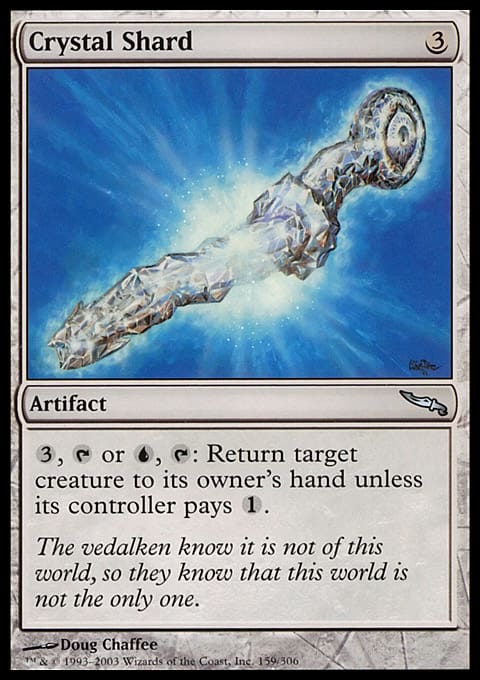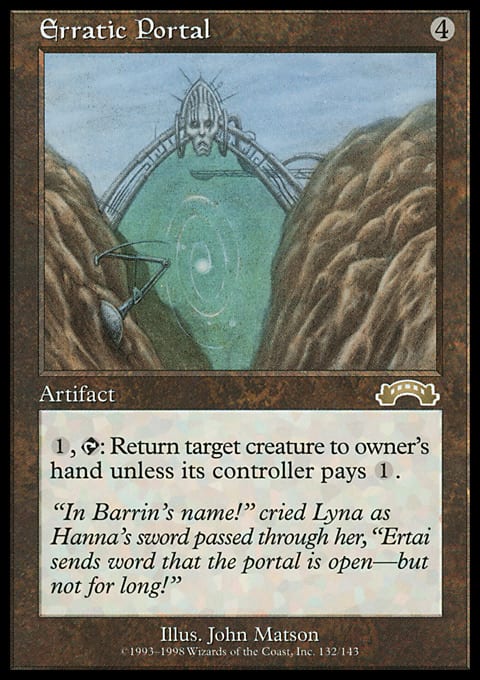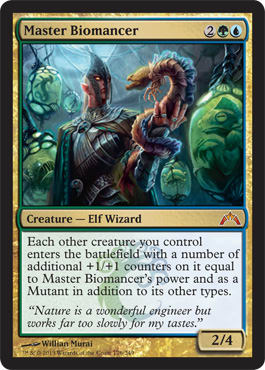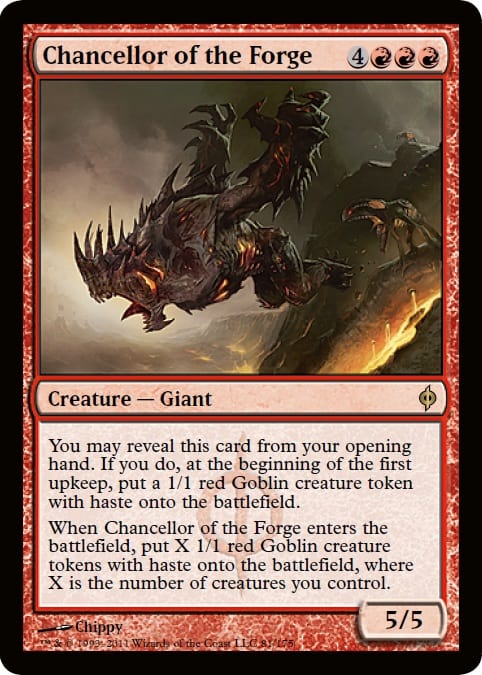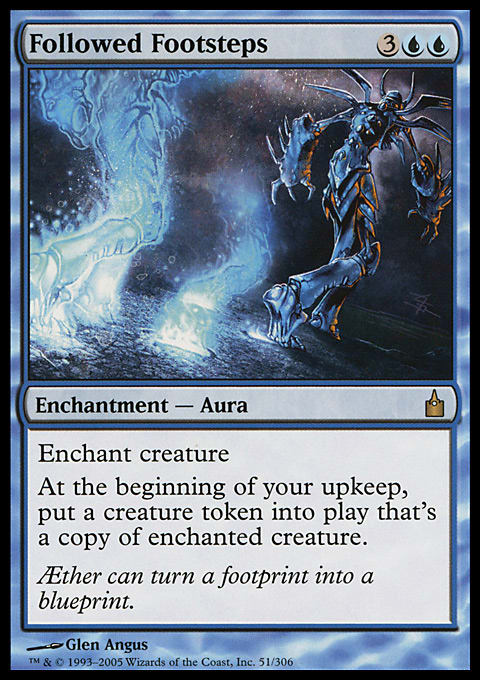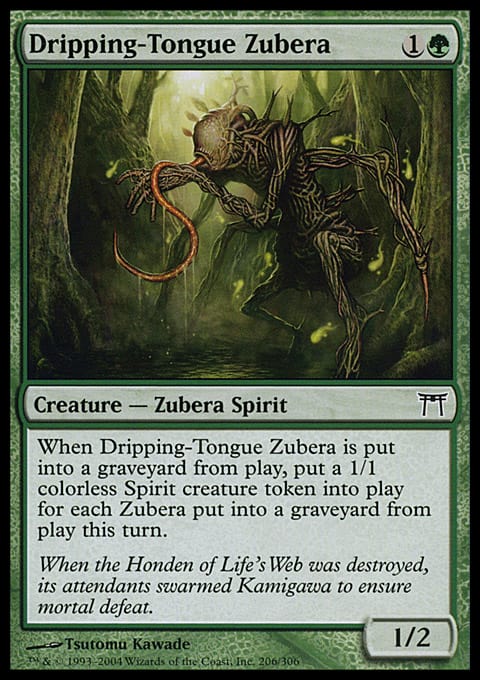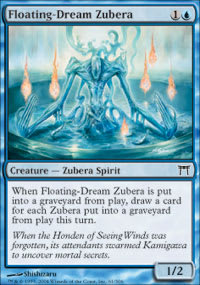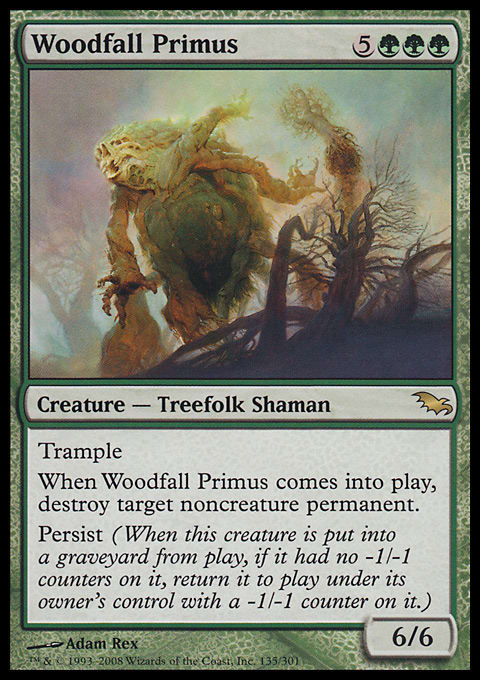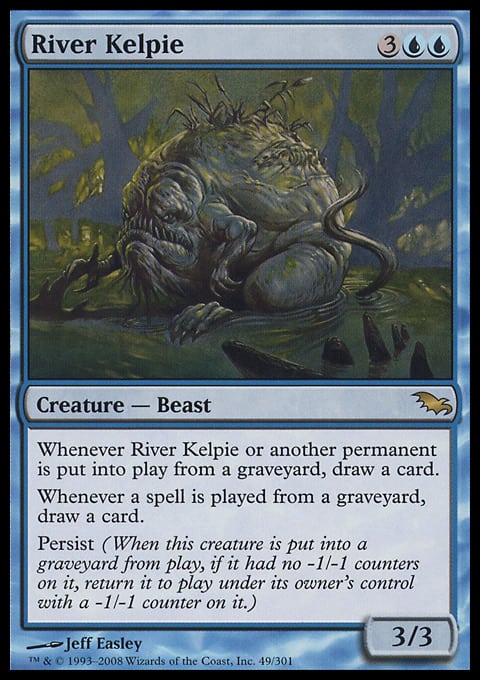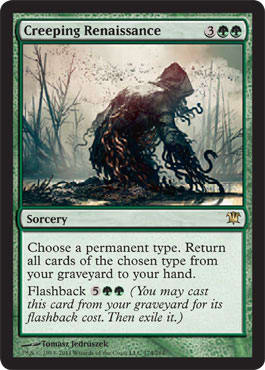Amongst all the talk of Modern Masters spoilers it’s been easy to miss the Magic 2014 cards pouring in, but as far as I’m concerned, they’re the more interesting ones. Sure, it’s fun to watch old favorites return, but new cards means new possibilities. For one thing, Slivers are back.
 |  |
Now, before you freak out, no, I’m not about to build a Sliver Overlord deck and trying to pass it off as something new. I’m interested by the fact that as much as having Slivers with different abilities powers them up, I’d usually rather just have more Megantic Slivers. And that can be arranged.
Of course, Slivers aren’t the only creatures that improve when you make additional copies of them. In fact, they’re not even the most impressive ones in Magic 2014!
 |  |
But why stop at two copies? “Because Riku only triggers once?” Hogwash.
Just bounce the original, and generate another token every turn. Build up enough, and you’ll do something truly awesome.
A Bunch of Squares
I’m not going to be too mathematical in this column, but suffice it to say that cards have effects that scale up differently as the number of copies increases. Normal creatures do this linearly: When you have twice as many Grizzly Bears, they can dish out twice as much damage. We’re interested in values that grow more quickly.
One Thorncaster Sliver will trigger to deal 1 damage, two will deal 4; three: 9; four: 16. Oh, did I mention that you can split this as you choose and repeat it every turn?
Scourge of Valkas grows similarly, but it exchanges repeatability for faster action and an army of Dragons.
Windreader Sphinx also follows this pattern, but it upgrades those Lightning Bolts into Ancestral Recalls. I believe that’s what the kids today call “good value.”
Megantic Slivers scale up a little bit more quickly (3x2+3x for those keeping track). Two Megantic Slivers will be 9/9s. Three? 12/12s. Once you build up to four 15/15s, we’re getting into table-killing range. And the options don’t end there!
How would you like a bunch of copies of Avenger of Zendikar to all pump each other’s tokens? Brood Slivers to make an army grow faster and faster? Immaculate Magistrates to make something genuinely colossal? How about Elvish Archdruids that all boost one another and make a ludicrous amount of mana? Or how about this guy?
The power of successive Master Biomancers grows exponentially, but the rate at which the total boost grows is even faster. One copy gives incoming creatures 2 counters, but two give 6, three give 14, and four give 30!
But we can go even further: exponential growth.
Each successive copy of Chancellor of the Forge will more than double the number of creatures you control! Even with Riku as you only other creature, the third Chancellor will bring you up to 22 attackers on board.
Copy, Paste
I hope all of those prospects have you excited, but there’s still the small matter of realizing them. In a format that can often involve a Day of Judgment every fourth turn, triggering Riku once per turn may not always be fast enough. Luckily, there’s an easy solution right out of last week’s article: Clones.
The selection has changed a little bit to emphasize generating multiple copies, but you’ll want plenty of more conventional Clones because they work so well with the existing plan to multiply cool creatures. Usually, the Clone will be cheaper than the creature you want to copy, so by leaving the original in play, you can start casting, copying, and bouncing each turn much more quickly. On top of that, Clones give you the opportunity to make armies of some off-color creatures your opponents might bring to the table.
And even without anything that perfectly suited, playing and bouncing Clones still lets you make use of the scores of enters-the-battlefield triggers you’re bound to see on the other side of the board.
Incur Wrath
Cloning creatures more quickly should let you do something before facing the Wrath of God, but it won’t prevent that eventuality. And you know what? Maybe that’s not a bad thing. I mean, what if instead of Avenger of Zendikar, you chose to copy a Zubera?
Suddenly, Damnation might just be putting you ahead! Or, if you want to go even further . . .
Just stack your persist triggers so that the Clones come back after other creatures, and you’ll be able to copy them. These two triggers are worth copying, but if you had something more exciting on board, you can just turn them into Windreader Sphinxes instead. Or, for the more combo-oriented among you, you can enjoy both a persist creature and one with undying to sacrifice Clone an unlimited number of times.
You won’t always be able to set up favorable board positions for the delivery of a Supreme Verdict. But all hope is not lost. You can still recover the dead Clones and begin again.
Home Base
All that leaves to work out is the mana. Life from the Loam and cycling lands are generally a great fit for three-colored green decks because the package allows you to run more lands without worrying about mana-flood, but it doesn’t require you to cut down on colored mana sources as Kessig Wolf Run would. On top of that, you have enough cycling lands to make Life from the Loam a consistent draw engine, and here, it even adds value to your mass Regrowths.
As for acceleration, Wood Elves and creatures like it make great choices because they enable Riku, Clones, and bounce effects to find lands if need be. What’s more, you might just draw Infinite Reflection and turn them all into Utvara Hellkites!
Stick all that in a blender, and you end up with some sort of CGI-heavy prequel:
Attack of the Clones
- Commander (0)
- Jango Fett (22)
- 1 Utvara Hellkite
- 1 Scourge of Valkas
- 1 Windreader Sphinx
- 1 Sea Gate Loremaster
- 1 Dripping-Tongue Zubera
- 1 Ember-Fist Zubera
- 1 Floating-Dream Zubera
- 1 Brood Sliver
- 1 Synapse Sliver
- 1 Thorncaster Sliver
- 1 Megantic Sliver
- 1 Elvish Archdruid
- 1 Immaculate Magistrate
- 1 Avenger of Zendikar
- 1 Master Biomancer
- 1 Sharding Sphinx
- 1 Garruk's Packleader
- 1 Regal Force
- 1 Woodfall Primus
- 1 Diluvian Primordial
- 1 Chancellor of the Spires
- 1 Chancellor of the Forge
- Stormtroopers (21)
- 1 Followed Footsteps
- 1 Progenitor Mimic
- 1 Rite of Replication
- 1 Dance of Many
- 1 Kiki-Jiki, Mirror Breaker
- 1 Soul Foundry
- 1 Spitting Image
- 1 Stolen Identity
- 1 Cackling Counterpart
- 1 Clone
- 1 Phantasmal Image
- 1 Phyrexian Metamorph
- 1 Quicksilver Gargantuan
- 1 Sakashima the Impostor
- 1 Sakashima's Student
- 1 Vesuvan Doppelganger
- 1 Vesuvan Shapeshifter
- 1 Cryptoplasm
- 1 Infinite Reflection
- 1 Druid's Deliverance
- 1 Horncaller's Chant
- Jedi Council (12)
- 1 Praetor's Counsel
- 1 Creeping Renaissance
- 1 Reap
- 1 Nostalgic Dreams
- 1 Echoing Truth
- 1 Cauldron of Souls
- 1 River Kelpie
- 1 Crystal Shard
- 1 Erratic Portal
- 1 Cloudstone Curio
- 1 Blood Clock
- 1 Umbilicus
- Training (7)
- 1 Life from the Loam
- 1 Farhaven Elf
- 1 Solemn Simulacrum
- 1 Wood Elves
- 1 Yavimaya Dryad
- 1 Ondu Giant
- 1 Quirion Trailblazer
- Death Star (37)
- 1 Riptide Laboratory
- 1 Command Tower
- 1 Flooded Grove
- 1 Cascade Bluffs
- 1 Fire-Lit Thicket
- 1 Grand Coliseum
- 1 Transguild Promenade
- 1 Rupture Spire
- 1 Gruul Turf
- 1 Simic Growth Chamber
- 1 Izzet Boilerworks
- 1 Mosswort Bridge
- 1 Spinerock Knoll
- 1 Raging Ravine
- 1 Reliquary Tower
- 1 Stomping Ground
- 1 Breeding Pool
- 1 Temple of the False God
- 1 Tolaria West
- 1 Smoldering Crater
- 1 Forgotten Cave
- 1 Slippery Karst
- 1 Tranquil Thicket
- 1 Remote Isle
- 1 Lonely Sandbar
- 1 Thawing Glaciers
- 1 Mountain
- 4 Forest
- 6 Island
Whether you love Commander for the big plays or the crazy ones, this deck can deliver. And there are a lot of other great choices for creatures to Clone. Feel free to add your favorites! Then, just sit back, relax, and get ready to answer the inevitable question:
“How big are those Megantic Slivers?”














